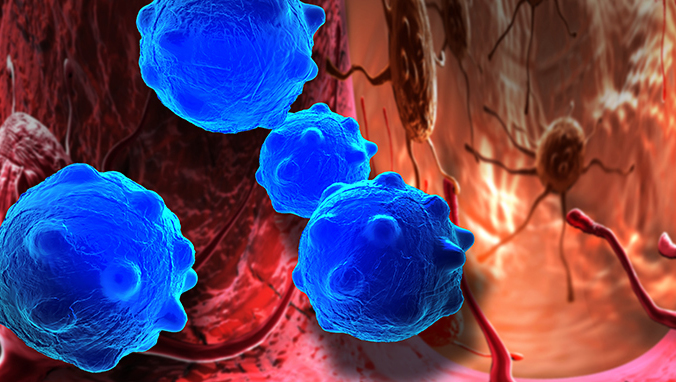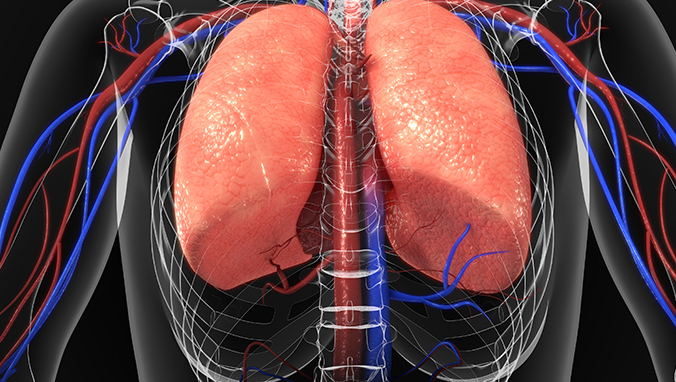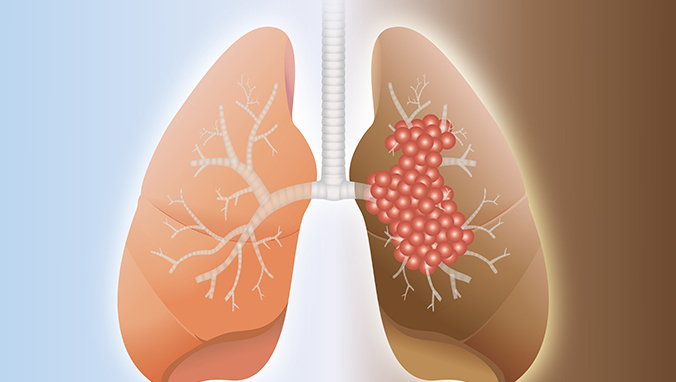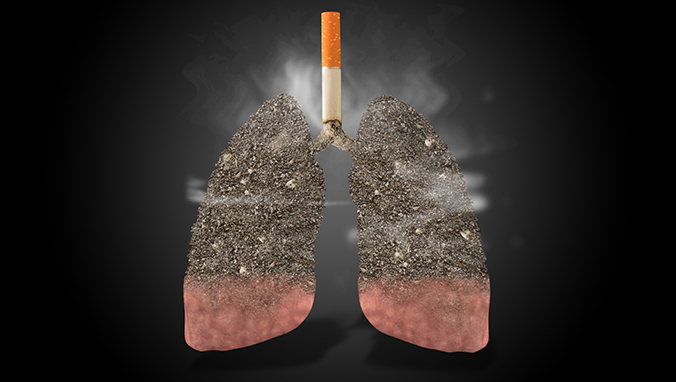How to deal with "cough, phlegm, and asthma" in winter with high incidence of COPD
Chronic obstructive pulmonary disease is the full name of chronic obstructive pulmonary disease. It is a common respiratory disease. After the snow falls every year, the temperature drops and it enters the high incidence period of chronic obstructive pulmonary disease. It takes half an hour to climb 3 floors, and has to rest several times in the middle of a walk. . . These are the pain faced by COPD patients. Chronic obstructive pulmonary disease is not easy to find at first, and it develops more often than middle age. However, if it can be prevented and treated as early as possible, it is entirely possible to effectively control the disease, slow the progression of the disease, and prolong the survival period.
Early symptoms are mild
The main symptoms of COPD are chronic cough, sputum production, and difficulty breathing. However, due to mild symptoms, it is easy to be ignored, resulting in misdiagnosis and missed diagnosis. Therefore, the early symptoms of COPD cannot be ignored. And many people cough and cough up white sputum after getting up in the morning, but don''t care that these may be early symptoms of COPD. When asthma occurs after activity, the condition has often developed to moderate to severe.
Pay attention to these symptoms
Coughing is indirect, more severe in the morning, and coughs morning and evening or all day thereafter, but coughing is not obvious at night. A few cases of cough are not accompanied by sputum, and some cases have obvious airflow limitation but no cough symptoms.
After coughing, a small amount of mucous sputum is usually spit. Some patients have more sputum in the early morning. The amount of sputum increases during infection and purulent sputum often occurs.
Shortness of breath or difficulty in breathing, which occurs only in the early days when working hard, and gradually increases in the later period, so that daily activities and even shortness of breath also feel short of breath.
Wheezing and chest tightness. Some patients, especially severe patients, have wheezing. Chest tightness usually occurs after exertion.
In the clinical course of the disease, especially in heavier patients, systemic symptoms may occur, such as weight loss, loss of appetite, peripheral muscle atrophy and dysfunction, mental depression, anxiety, etc. Coughing up blood sputum or coughing up blood when combined with infection.
Recognition of COPD
Clinical symptoms, some patients mainly show cough and sputum, and some patients mainly show chest tightness, wheezing; lung function damage Circumstances, some patients are mainly ventilatory dysfunction, in addition to ventilatory dysfunction, some patients also have a significant decrease in ventilation function.
On imaging CT examination, some patients show "chronic inflammation of airway", some patients show "emphysema"; in terms of the frequency of acute exacerbation, some patients do not COPD exacerbation occurs, and some patients will exacerbate multiple times a year.
Complications of COPD
The prevalence, disability, and mortality of COPD are high, and are currently the fourth leading cause of death in the world. As many as 600 million people can be affected by obstructive pulmonary disease. In my country, COPD is the fourth leading cause of death among urban residents and the first in rural areas.
COPD is associated with many comorbidities, such as coronary heart disease, myocardial infarction, pulmonary hypertension, pulmonary heart disease, metabolic syndrome (such as diabetes), and repeated fractures caused by osteoporosis.
Chronic obstructive pulmonary disease combined with lung cancer is more common. In clinical practice, male smoking patients diagnosed with lung cancer are basically combined with varying degrees of chronic obstructive pulmonary disease.
COPD will also cause psychological problems. Many elderly COPD patients with depression seriously affect the quality of life of the patients and deserve our attention.
Prevention and treatment of COPD
COPD is not an incurable disease, but its mortality rate is high. Therefore, timely treatment is the most important. Chinese medicine believes that COPD belongs to the categories of "cough", "asthma", and "pulmonary distension" in traditional Chinese medicine. According to the symptoms of different periods, different treatments are taken.
Acute phase: clearing away heat and removing phlegm
In the acute attack period, mainly based on Chinese medicine for clearing away heat and reducing phlegm, there are many more mature classic prescriptions, such as Sangbaipi decoction and ding Chuan Tang, Ma Xing Shi Gan Tang, Er Chen Tang, San Zi Yang Qin Tang, etc.
Prolongation period: enhance immunity
For the prolongation period and remission period, Chinese medicine should be used as the main treatment. For this period of treatment, there is a classic prescription for treating both the symptoms and the symptoms: Suzi Jiangqi Decoction.
Remission period: protect lung function
In the remission period, Chinese medicine conditioning can reduce the number of attacks, prevent the development and aggravation of the disease, delay the course of the disease, and protect the lung function. There are many Chinese medicines in the remission period. For example, Liuwei Dihuang Pills can be used in patients with kidney-yin deficiency, Yupingfeng Powder is used in patients with lung deficiency, Bailing capsules, Jinshuibao, emphysema tablets are suitable for patients with lung and kidney deficiency.
Recommended for COPD diet
Cordyceps Millet Porridge
Ingredients: Cordyceps 10g, Pork Lean 50g, Millet 100g, Ginger 5g, Salt .
Practice: wrap cordyceps with cloth, remove lean meat from pork lean meat, wash and chop; after washing millet, add appropriate amount of water, put it in a casserole together and boil it, boil it with fire; then use After simmering until the porridge is cooked, add salt to taste and stir for one minute. Take 1 dose daily, drink it in 2 times, and take it for 5-7 days.
Houttuynia cordata Soup
Ingredients: Houttuynia cordata 60g, pig lung 200g, salt.
Practice: First rinse the pig lungs, drain and cut into pieces; then put Houttuynia cordata into the casserole, add appropriate amount of water to fry, remove the residue and extract the juice; put the medicinal juice into the pot and the pig lung pieces, first Bring to a boil on fire; then braise the pig''s lungs with a simmer until it is cooked, add salt to taste, and stir for one minute.
Related Articles

- First-line chemotherapy for squamous cell carcinoma
- Squamous cell carcinoma is abbreviated as squamous cell carcinoma, also known as epidermal carcinoma. It is a malignant tumor that occurs in epidermal or accessory organ cells. Cancer cells
- 2020-08-02

- What does negative gene test for lung adenocarcinoma mean
- This depends on the specific problem. The occurrence of many diseases is related to genes, which determines the occurrence of diseases, as well as symptoms, prognosis, etc. Gene sequence de
- 2020-07-30

- What to pay attention to after lung adenoma
- Pulmonary adenoma is a very serious disease. Once this disease occurs, it needs to be actively treated. Surgical treatment is a very effective method for treating lung adenoma, but the pati
- 2020-07-27

- Is advanced chemotherapy for lung adenocarcinoma useful?
- People with lung cancer have a lot to do with their usual lifestyle habits, so it is necessary to seize the time of treatment. If it is late, it will be very difficult to treat, but cancer
- 2020-07-26

- What are the genetic tests for lung adenocarcinoma
- Genetic testing Why do cancer patients need to do? Perform genetic testing before treatment, mainly to identify which targeted drugs this patient can take. So what are the most useful types
- 2020-07-25

- Is lung infiltrating adenocarcinoma serious?
- Suffering from invasive adenocarcinoma of the lungs is very serious. In the advanced stage, it will cause great pain to the patient''s body, so everyone must go to the hospital for
- 2020-07-25
